Reviews
Jim Henson’s The Storyteller
various
UK / USA, 1988-1989
Credits
Review by Megan Weireter
Posted on 08 October 2010
Source Netflix VoD
Categories 31 Days of Horror VII
Long before there was such a thing as a film, people scared themselves to death with language. Folklore brims over with vivid, gory scenes and evil characters sprung from the collective imaginations of entire cultures. At a time when much of the outside world remained unknown to most people, folk tales filled in those geographical gaps with landscapes awash in strange kings, heroes, monsters, magic, and bloodshed. Today it can still be surprising to learn the true horrors of fairy tales in their older iterations, even though it simply proves that the imaginations of our ancestors were as twisted as our own.
The sweeter contemporary versions of so-called classic tales like “Cinderella” and “Beauty and the Beast” are exactly that: they are popular culture’s spin on stories apparently so embedded into our brains as to be timeless. But isn’t this kind of Disney-fying a little inevitable? After all, there’s no reason to think that cultures in the future won’t similarly recreate these same tales in their own image all over again. Stories are this powerful. A good story won’t die in any medium—it will only be reinvented.
Just don’t tell that to Jim Henson. The Storyteller, which Henson produced, isn’t interested in recontextualization at all. For a brief period in the late 1980s on British and American TV, the series’ nine episodes unearthed relatively obscure European folk tales and recreated them in a deliberately antique, earthy style as far removed as possible from Disney-ism. The Henson Creature Shop created amazing effects that pushed their technological boundaries for the show, but always in service of authenticity, of capturing something very old and very real that contemporary culture has lost. You sense that feeling of loss in this show; there’s a sadness deeper than nostalgia at the heart of this universe, a seriousness that only magnifies the scares. The show, intentionally, isn’t just for children—in fact, some would argue that by today’s standards it’s not appropriate for children at all. (Even though, personally, terrifying Jim Henson productions were some of my favorite things to watch as a kid.) It doesn’t shy away from folklore’s brutality and sexuality, but more importantly, it simply undoes the dumbing-down of fairy tales, period. These stories are frequently whimsical and have funny moments, but to Henson, they’re also much more serious than any of us remember.
Each episode begins near the roaring fire with the storyteller, played by John Hurt in elfish makeup, and his talking dog, an expressive Muppet who stands in for the audience as avid listener, gasping and furrowing his brow in all the right places. The surroundings are ancient: the windows are blackened and hazy and small, and the room itself, with its crumbly stone walls and air of being forgotten by time, makes you feel dank and damp just to look at it. The storyteller himself is clearly a relic of a bygone era. Each of the episodes begins with his voiceover:
When people told themselves their past with stories, explained their present with stories, foretold the future with stories, the best place by the fire was kept for The Storyteller.
He’s happy to tell us stories, but nowadays the only reason he gets the best place by the fire is because no one bothers to sit near him anymore—he’s living in the realm of memory.
Once the storyteller starts up on this week’s story, the room dissolves—sometimes almost literally. The nine stories told in the series are of German, Russian, or Celtic origin, and though viewers might not be familiar with these exact tales, there are echoes of more famous stories. “Sapsorrow” is a grimier, more moralistic Cinderella story, “The Three Ravens” has some similarities to “The Wild Swans,” and many of the other stories have whiffs of familiarity that will likely strike a chord even if you haven’t read this kind of thing in a while. But none are so familiar as to be dull, and all have a quality of unexpectedness that enriches the telling.
In “Fearnot,” for example, the title character sets off on a quest to learn how to be afraid. It seems like a classic fool’s journey, but after Fearnot’s encounters with swamp beasts and a disturbing half-man who chases him while running on his hands and cackling, Fearnot finally understands terror in a surprisingly mundane, adult way—in the possibility of losing a loved one. “The Luck Child” is a meditation on the nature of fate, for it’s clear from the start that the Luck Child himself is destined to triumph, and anyone’s attempts to thwart him are bound to fail. His fate stands in sharp contrast with the fate of the boatman, doomed for mysterious reasons to row back and forth to an evil island for all eternity, until the Luck Child discovers how he can help himself. And “The Three Ravens” is almost heartbreaking in its depiction of what might be a father’s secret wish: to sequester his children away from the world in a safe, secret place that can only be found by unraveling a magic thread. Even that safe place, of course, turns out to be all too pregnable, and worse yet, those realized parental anxieties repeat themselves through another generation.
One of the darkest, strangest episodes, “The Soldier and Death,” follows a soldier on a series of adventures that include playing cards with devils - foul red demons grinning hideously and clawing their way all over the walls of the palace they’ve invaded - and finding a magical glass that has the power to see and chase away Death himself. For a while, the soldier is rewarded for his goodness and cleverness with a rich, happy life. But playing too much with Death has its consequences, and the soldier’s ultimate fate is so appalling that I’d rather not even give it away.
The scariest episode, though, might be “A Story Short,” the only one in which the storyteller himself is a character. The episode starts innocently enough, with a nod to the old “Stone Soup” tale, before it takes such a surreal turn that something like narrative chaos actually descends, with gruesome results. A man’s ears and fingers fall off in his hands, a child climbs a magicked rope ladder into an eerie nothingness, and the storyteller himself - our trusted guide - is turned into a shrieking rabbit as his wife looks on and laughs. All of this is kind of funny, but also so disorienting that you almost want to laugh and scream all at once. One thing we do tend to expect from fairy tales is a cohesive narrative in which one thing results logically from another, but “A Story Short” turns those expectations on their heads.
Storytellers of long ago had only their own words, of course, whereas Henson has a staff of Muppeteers, scads of respectable British actors, and a small cadre of directors at his disposal.1 And yet Henson remembers that the language of the story itself can be the true source of its power. John Hurt’s storyteller doesn’t just introduce each story and then sit back and let the miracle of television take it from there—he tells the stories. Hurt slips perfectly into his role as a teller of tales from yesteryear, resorting to all kinds of tricks to assure that we’re hanging on his every word as well as on every image. His speech, which sometimes slips into verse and even occasionally into rhyme, has a music that’s in keeping with the best of the oral tradition, especially notable in repeated lines that held the attention of long ago audiences (and were an aid to storytellers’ memorization, too). These lines don’t even need to make literal sense. Could the Luck Child realistically have been “the seventh son of a seventh son, born in a week with two Fridays”? And what does it mean that Hans My Hedgehog can play a tune on the bagpipes “so bitter and sweet it began like hello and ended like goodbye”? It doesn’t matter: language as musical as this becomes incantatory, a pleasure just to listen to.
Of course, there’s plenty of great stuff to look at, too. The video effects were apparently ground-breaking for their time, but at this point they’re showing their age. At first this is a little distracting, but as I watched more of these episodes, I came to really love the look of the flat old-fashioned effects—in the end, they make each episode look even more stylized, more in the realm of the imagination. And that seems in keeping with what Henson’s trying to do here anyway. These sets are so shrouded with mist and darkness that the castles and the woods seem to be melting into them at the edges. Many small scenes are played out in shadows, the actors’ profiles in black striding through a vague landscape. Everything is designed to look as if it’s emerging from a dream, or from the storyteller’s imagination. Henson’s creatures, on the other hand, have the solid, three-dimensional feel typical of those in his other works of fantasy, especially The Dark Crystal. Since the series is dominated by actors, and the Muppets only play animals and magical creatures, the effect is to heighten that magic. You can practically feel the sticky feathers of the griffin that guards an island in “The Luck Child,” while the Thought Lion who helps the lovely Anya in “The True Bride” radiates a majesty that just wouldn’t be the same in CGI. The Heartless Giant, a villainous creature who actually stars in his own story, is a marvel of full-scale puppetry as well, and expressive enough to communicate all of that story’s moral ambiguity in his body language alone. Even the smaller Muppets are fun to watch. The unfortunate Sapsorrow is helped by a crowd of small woodland creatures played by Muppets, but there’s nothing cute about them—you can practically smell their animal funk and see their lice as they scamper around sewing Sapsorrow’s disguise.
The Storyteller wasn’t a huge success in the U.S. when it first aired on NBC, which in hindsight isn’t that surprising. Henson’s vision is so original that the series is difficult to classify. As in the best of his work, The Storyteller refuses to talk down to children and also refuses to indulge the cynicism of adult viewers. Jim Henson doesn’t see cynicism: he wants to ignite childlike wonder in all of us. It’s a lofty goal, particularly for a half-hour of network television, but once upon a time, a real time, it’s exactly what fairy tales could do. And even if it’s too late for our jaded culture to ever recapture the original spirit of these stories, Henson was determined not to give up so easily.
- Henson himself directed only two episodes and left the others to various colleagues to direct, although I for one didn’t see much difference in the styles; it appears that Henson oversaw all of these episodes closely enough to give the show a pretty unified feel. Here’s a list of the directors of each episode for the curious, though.
Jim Henson: “The Soldier and Death,” “The Heartless Giant”
↩
Steve Barron: “Fearnot,” “Hans My Hedgehog,” “Sapsorrow”
Jon Amiel: “The Luck Child”
Charles Sturridge: “A Story Short”
Paul Weiland: “The Three Ravens”
Peter Smith: “The True Bride”
More 31 Days of Horror VII
-

The Thin Blue Line
1988 -

The Ninth Configuration
1980 -
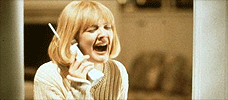
Scream
1996 -
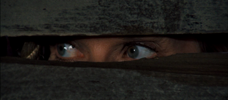
Dying Room Only
1973 -
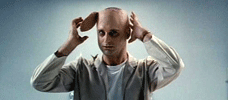
Brain Dead
1990 -
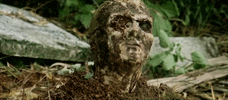
Zombi 2
1979 -
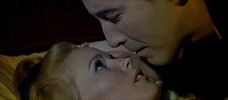
Dracula Has Risen from the Grave
1968 -
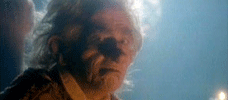
The Storyteller
1988-1989 -
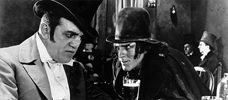
Dr. Jekyll and Mr. Hyde
1920 -
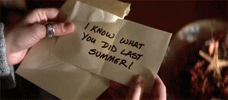
I Know What You Did Last Summer
1997 -
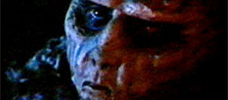
Don’t Be Afraid of the Dark
1973 -
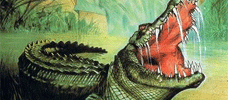
Dark Age
1987 -
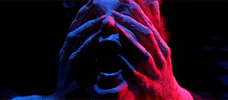
Inferno
1980 -
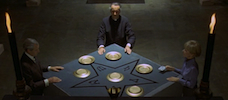
To the Devil a Daughter
UK / West Germany -
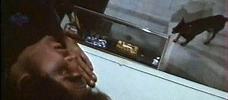
Trapped
1973 -
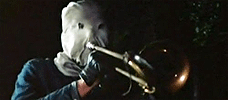
The Town that Dreaded Sundown
1976 -
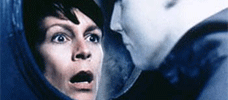
Halloween H20: Twenty Years Later
1998 -

Killdozer
1973 -
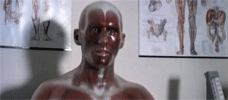
Pin
1989 -
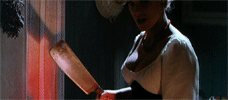
Frankenstein Created Woman
1967 -
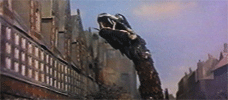
Reptilicus
1961 -
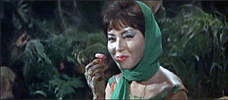
Matango
1963 -
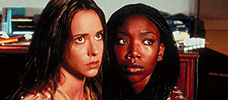
I Still Know What You Did Last Summer
1998 -
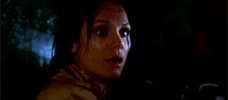
Night Terror
1977 -
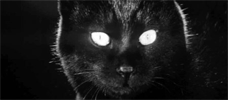
Kuroneko
1968 -

Demons
1985 -
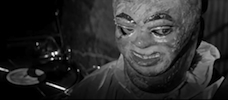
Paranoiac
1963 -
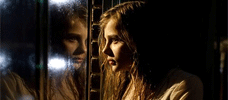
Let Me In
2010 -
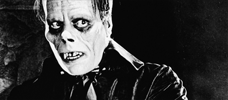
The Phantom of the Opera
1925
We don’t do comments anymore, but you may contact us here or find us on Twitter or Facebook.



